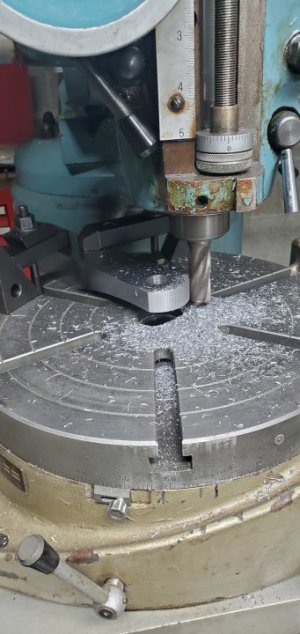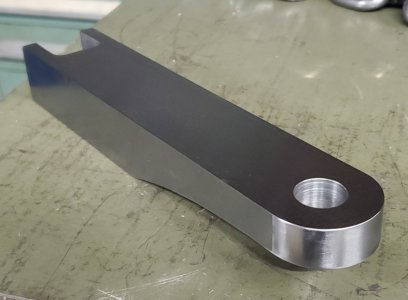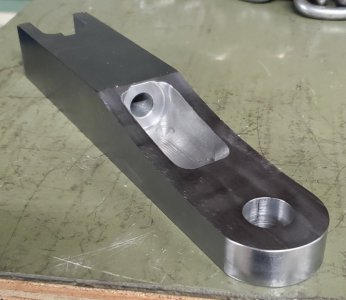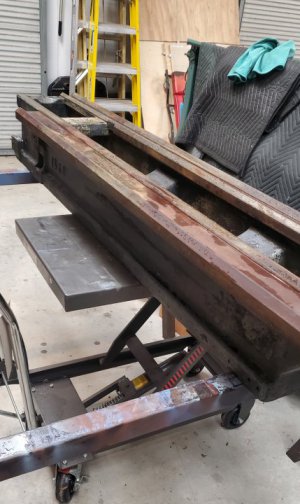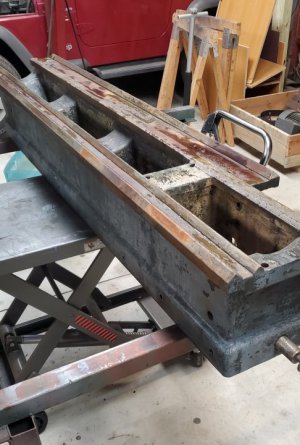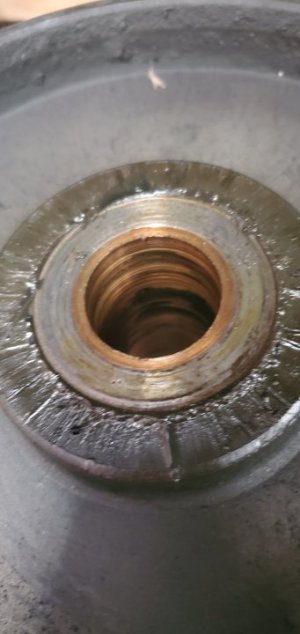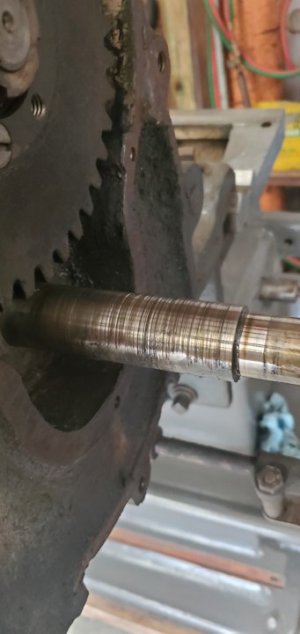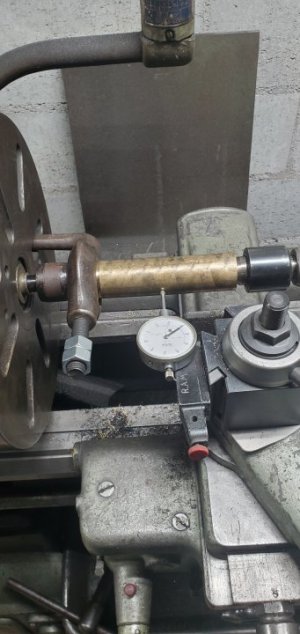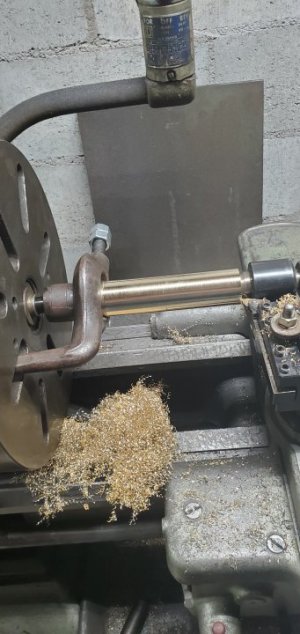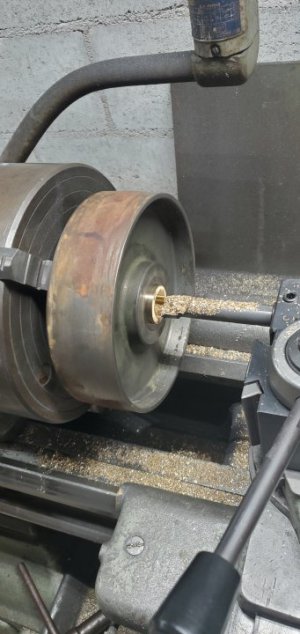I've finished up with the lathe bed... cleaned, painted, installed back on the legs, and did what I could cleaning the ways up...
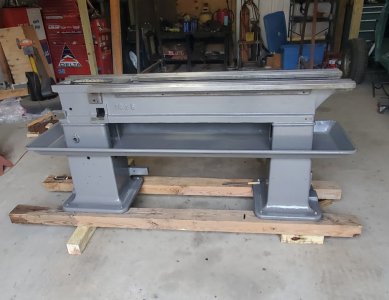
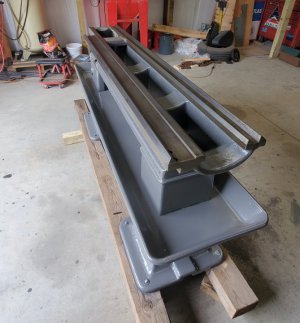
There is some pitting in the flat areas between the ways, this is the worst pitting...
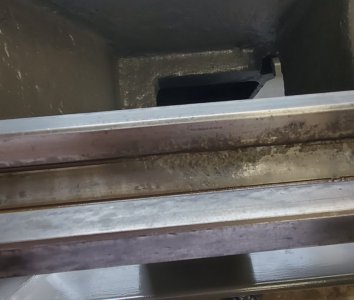
It extends up into the lower half of the way that the tailstock rides on... it's ugly, but I don't see it causing any problems, so I'll leave it alone for now.
I re-mounted the countershaft/ drive pulley assembly onto the bed just to support it while I disassemble it. It seems to be in very good mechanical condition, but needs a good cleaning.
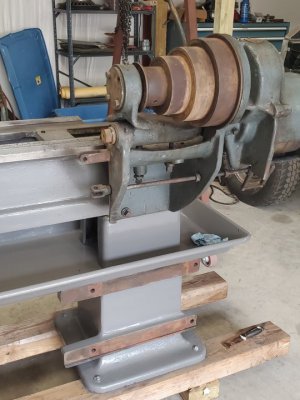
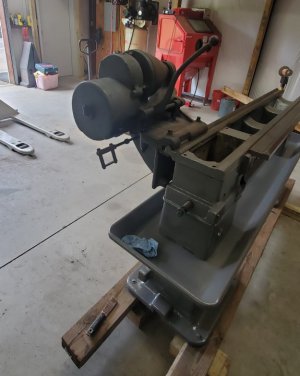
When I get it finished, I'll have to figure out how to fabricate a motor mount system... it will mount to the back of the leg under the chip pan.
I've also been working on assembling the apron...
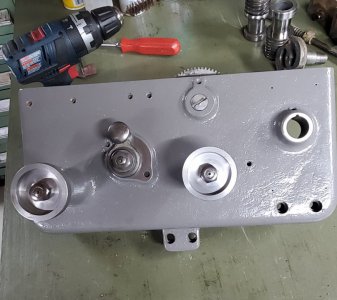
The handwheel that goes on the apron is not the original Hendey wheel... it is a cast iron 3 spoke wheel, where the original was a 4 spoke... I'll reuse the 3 spoke, it may be near impossible to find an original. I've soaked it overnight in evaporust, and the knob on it is very pitted with rust...
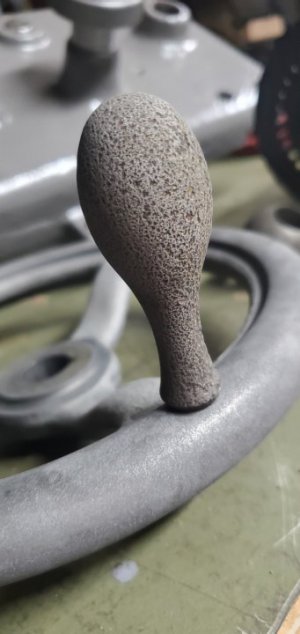
There is not any way to polish that out and make it look decent, so I'll have to come up with another plan.
-Bear

